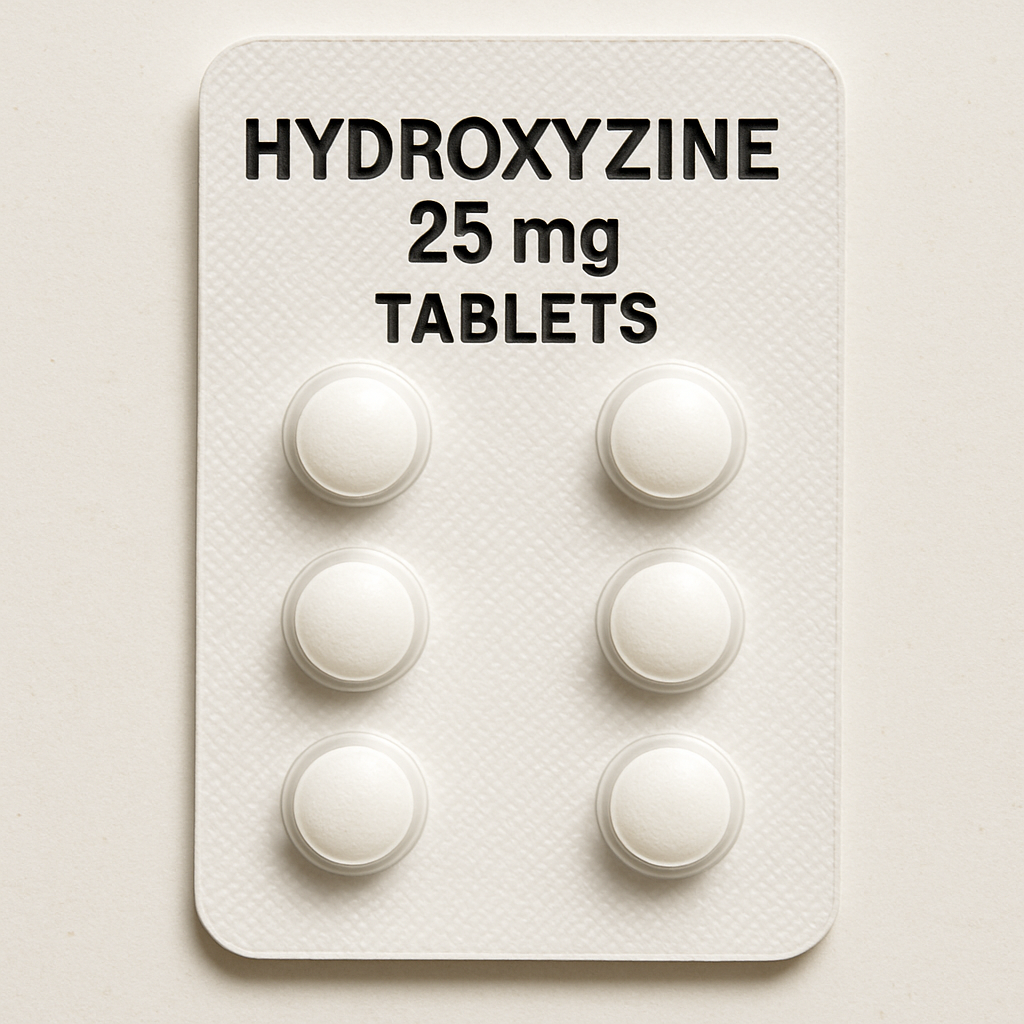
Amitriptyline is a tricyclic antidepressant commonly used to treat depression and certain types of nerve pain. It works by affecting neurotransmitters in the brain, such as serotonin and norepinephrine, which helps improve mood and relieve pain.
Mechanism of Action
Amitriptyline’s primary role is to inhibit the reuptake of norepinephrine and serotonin, which are crucial neurotransmitters in regulating mood and pain. By increasing their levels in the brain, amitriptyline can help alleviate symptoms of depression and chronic pain. This mechanism also contributes to its sedative properties, which can be beneficial for patients with insomnia related to depression.
Therapeutic Uses
While primarily prescribed for depression, amitriptyline is also effective in treating neuropathic pain conditions such as fibromyalgia and diabetic neuropathy. Its ability to modify pain perception makes it a valuable tool in the management of chronic pain syndromes. Additionally, amitriptyline can be used off-label for migraine prophylaxis and irritable bowel syndrome, showcasing its versatility.
Amitriptyline Side Effects
While amitriptyline can be effective, it also comes with a range of potential side effects. Common side effects include:
- Drowsiness
- Dry mouth
- Constipation
- Blurred vision
- Weight gain
Common Side Effects
Drowsiness and dry mouth are among the most frequently reported side effects and may diminish with continued use. Patients often experience constipation due to the anticholinergic properties of the drug, which may require dietary adjustments or additional medications to manage. Blurred vision and weight gain can also occur, necessitating regular monitoring and lifestyle modifications.
Serious Side Effects
In some cases, more serious side effects can occur, such as:
- Irregular heartbeat
- Severe mood changes
- Seizures
These adverse effects require immediate medical attention. Irregular heartbeat and severe mood changes can signal potentially life-threatening conditions. Seizures, though rare, indicate an urgent need for reassessment of the treatment plan, as they can pose significant health risks.
Managing Side Effects
It’s important for patients to discuss any side effects with their healthcare provider, as they may need to adjust the dosage or switch medications. Regular follow-ups and open communication can help mitigate risks and ensure optimal therapeutic outcomes. Lifestyle modifications, such as increased hydration and dietary fiber intake, can help manage minor side effects like constipation.
What is Hydroxyzine?

Hydroxyzine is an antihistamine that is primarily used to treat anxiety, allergies, and symptoms of itching. It works by blocking histamine, a substance in the body that causes allergic symptoms. It is also used as a sedative to treat anxiety and tension.
Mechanism of Action
Hydroxyzine works by antagonizing H1 receptors, which are responsible for mediating allergic responses in the body. By blocking these receptors, hydroxyzine effectively reduces symptoms such as itching, sneezing, and runny nose. Additionally, its sedative properties are attributed to its ability to depress the central nervous system, making it effective for anxiety relief.
Therapeutic Uses
Beyond its primary use for allergies, hydroxyzine serves as a valuable treatment for anxiety and tension. It is often employed as a short-term solution for anxiety due to its rapid onset of action. Hydroxyzine is also used pre-operatively to help sedate patients before surgery, reducing anxiety and promoting relaxation.
Hydroxyzine Dosage
The dosage of hydroxyzine varies depending on the condition being treated. For anxiety, a common dosage is 50 to 100 mg per day, divided into several doses. For allergy symptoms, the dosage may be lower.
Dosage for Anxiety
For anxiety management, hydroxyzine is typically prescribed in divided doses throughout the day. This allows for consistent therapeutic levels in the body, helping maintain a calming effect. Patients should adhere strictly to the prescribed regimen to avoid excessive sedation or potential side effects.
Dosage for Allergies
In treating allergic reactions, a lower dosage is often sufficient to alleviate symptoms. The antihistaminic properties of hydroxyzine effectively reduce nasal congestion, itching, and rashes. Patients should follow the prescribed dosage and consult their healthcare provider for any necessary adjustments.
Importance of Adherence
It’s crucial to follow the prescribed dosage and consult a healthcare provider before making any changes, as incorrect dosages can lead to increased side effects. Proper adherence ensures the medication’s effectiveness and minimizes risks of adverse reactions. Patients should be educated on the importance of timing and dosage to optimize therapeutic outcomes.
Combining Amitriptyline and Hydroxyzine
Sometimes, healthcare providers may prescribe both amitriptyline and hydroxyzine to be taken together. This combination can be effective for patients dealing with both anxiety and depression or pain.
Potential Benefits
The combination of amitriptyline and hydroxyzine can offer synergistic benefits for patients experiencing both depression and anxiety. Amitriptyline’s mood-enhancing effects, coupled with hydroxyzine’s anxiolytic properties, can provide comprehensive relief. This dual action can significantly improve quality of life for patients struggling with co-morbid conditions.
Potential Interactions
When taking these medications together, there are potential interactions to be aware of. Both medications can cause sedation, so taking them together may increase this effect. Patients should avoid alcohol and other sedatives while on these medications to prevent excessive drowsiness.
Risk of Sedation
The sedative effects of both medications can be compounded when used in combination, leading to increased drowsiness and potentially impairing cognitive and motor functions. It is crucial for patients to avoid activities requiring full alertness, such as driving or operating heavy machinery, while on these medications.
Alcohol and Other Sedatives
Combining amitriptyline and hydroxyzine with alcohol or other sedative substances can exacerbate their depressant effects. This can lead to severe drowsiness, respiratory depression, and impaired judgment. Patients should be counseled on the dangers of such interactions and advised to avoid these substances.
Monitoring and Adjustment
It’s also important to monitor for any new or worsening side effects and report them to a healthcare provider immediately. Regular follow-ups and medication reviews can help tailor treatment plans and ensure safety. Dosage adjustments may be necessary to minimize risks and optimize therapeutic efficacy.
Safety and Precautions

by Fotos (https://unsplash.com/@fotospk)
Before starting amitriptyline, hydroxyzine, or both, patients should discuss their full medical history with their healthcare provider. Certain conditions may affect the safety and efficacy of these medications, including:
- Heart conditions
- Glaucoma
- Urinary retention
- Liver or kidney disease
Pre-treatment Evaluation
A thorough pre-treatment evaluation is essential to identify any contraindications or potential risks associated with these medications. Patients with pre-existing heart conditions, for example, require careful assessment due to the risk of arrhythmias with amitriptyline. Similarly, those with glaucoma should avoid medications with anticholinergic properties that may exacerbate their condition.
Special Populations
Pregnant or breastfeeding women should also discuss potential risks with their doctor, as these medications may not be safe during pregnancy or lactation. The risks and benefits must be carefully weighed, and alternative treatments considered if necessary. Elderly patients may also require dose adjustments due to altered pharmacokinetics and increased sensitivity to side effects.
Monitoring and Follow-Up
Regular follow-ups with a healthcare provider are essential when taking amitriptyline and hydroxyzine. Monitoring the effectiveness of the treatment and any side effects can help ensure the best possible outcomes. Adjustments to the medication or dosage may be necessary over time.
Importance of Regular Monitoring
Regular monitoring allows for the early detection of adverse effects and ensures the ongoing effectiveness of the treatment. Patients should be encouraged to report any changes in symptoms or new side effects promptly. This proactive approach enables timely interventions and optimizes therapeutic outcomes.
Adjusting Treatment Plans
As patients’ conditions and responses to medication evolve, treatment plans may need to be adjusted. Healthcare providers should work closely with patients to tailor therapies to their individual needs. This may involve altering dosages, adding adjunctive therapies, or switching medications entirely to achieve optimal results.
Conclusion
Amitriptyline and hydroxyzine are valuable medications with unique benefits and risks. Understanding their effects, potential side effects, and interactions is key to using them safely and effectively. Always consult with a healthcare provider to tailor the treatment to your specific needs and ensure a comprehensive understanding of these medications.
By staying informed and proactive about your health, you can make the most of your treatment plan and achieve better health outcomes. Regular communication with healthcare providers and adherence to prescribed regimens are essential components of successful treatment. Through informed decision-making and ongoing monitoring, patients can optimize their therapy and enhance their quality of life.

